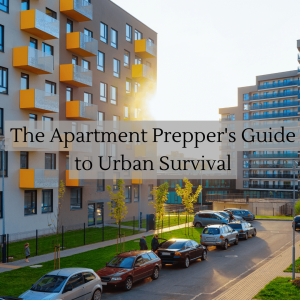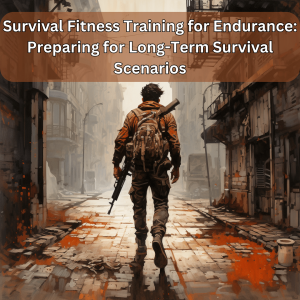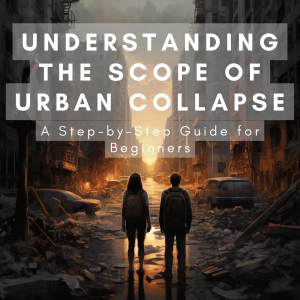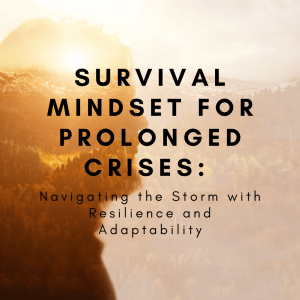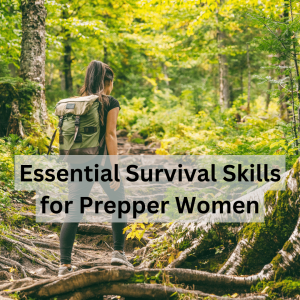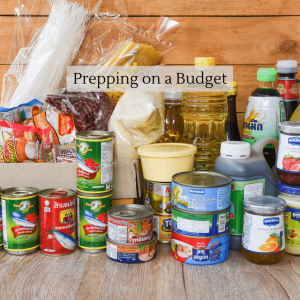Understanding the Scope of Urban Collapse
It’s essential to be prepared for potential catastrophic events. Urban collapse refers to the breakdown of societal structures, infrastructure, and services in densely populated areas, leading to a state of chaos and disorder. While we hope such situations never occur, understanding the scope of urban collapse can help us make informed decisions and be better equipped to protect ourselves and our loved ones. This beginner-friendly step-by-step guide will walk you through the key aspects of understanding urban collapse.
Step 1: Recognizing the Signs
The first step in understanding urban collapse is recognizing the signs that may indicate a potential breakdown of society. These signs can include:
- Economic instability: High unemployment rates, inflation, and financial crises can strain the stability of urban areas.
- Social unrest: Protests, civil unrest, and riots may signify underlying societal tensions.
- Political instability: Corruption, ineffective governance, and political divisions can weaken a city’s ability to respond to crises.
- Natural disasters: Frequent and severe natural disasters can overwhelm urban infrastructure and resources.
- Resource depletion: Scarce resources, such as water and food, can lead to competition and conflict.
Step 2: Understanding Triggers
Urban collapse can be triggered by various events, and understanding these triggers is crucial for preparedness. Common triggers include:
- Economic Collapse: A severe financial crisis or market crash can lead to widespread panic and loss of livelihoods.
- Pandemics: The outbreak of a contagious disease can overwhelm healthcare systems and disrupt daily life.
- Infrastructure Failure: Large-scale infrastructure breakdowns, like power grid failures or water supply disruptions, can plunge a city into chaos.
- Social Unrest and Riots: Civil unrest, fueled by social or political issues, can escalate and destabilize a city.
- Natural Disasters: Earthquakes, hurricanes, floods, or wildfires can cause extensive damage to urban areas.
Step 3: Analyzing Urban Vulnerabilities
Understanding the specific vulnerabilities of urban environments is crucial for survival preparedness. Key vulnerabilities include:
- Dependency on Systems: Cities rely on complex systems for food, water, electricity, and transportation. Disruptions to these systems can have severe consequences.
- Limited Resources: Urban areas may have limited access to natural resources, making them susceptible to shortages during a crisis.
- Population Density: High population density can exacerbate the impact of disasters and strain resources.
- Crime and Violence: Urban environments can harbor higher crime rates, which may escalate during times of collapse.
Step 4: Preparing for Urban Collapse
Being prepared is the best defense against urban collapse. Here are essential steps to take:
- Create a Survival Plan: Develop a comprehensive plan that includes identifying potential escape routes, safe locations, and communication methods.
- Stockpile Essential Supplies: Gather food, water, first-aid supplies, and necessary tools for self-sufficiency.
- Learn Survival Skills: Acquire skills such as navigation, first aid, self-defense, and basic wilderness survival.
- Build a Support Network: Establish connections with like-minded individuals or groups to pool resources and share knowledge.
Step 5: Developing a Resilient Mindset
In times of urban collapse, a resilient mindset is critical. Here’s how to cultivate it:
- Stay Informed: Keep abreast of current events and potential risks to remain informed and prepared.
- Stay Calm and Adaptable: Practice stress management techniques and adaptability to handle unpredictable situations.
- Focus on Community: Work together with neighbors and friends to support each other during challenging times.
Understanding the scope of urban collapse is an essential step in preparing for potential catastrophic events. By recognizing the signs, understanding triggers, analyzing vulnerabilities, and taking preparedness measures, you can enhance your chances of survival in times of crisis. Remember to develop a resilient mindset and work with others to build a supportive community. While we hope for the best, being prepared is an act of responsibility and self-preservation in an uncertain world.
